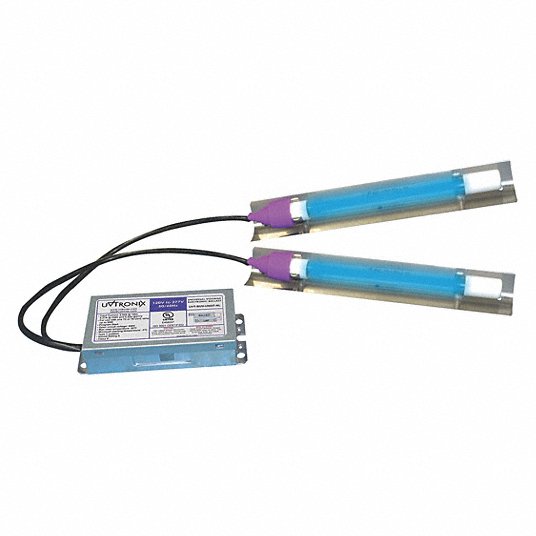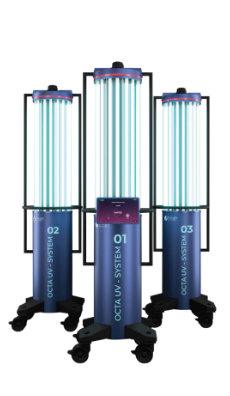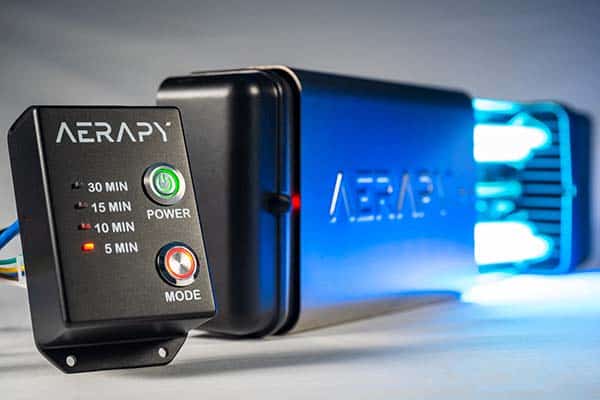Discovering the Conveniences of Far UVC Light: Transforming Indoor Air Top Quality
One such option that has acquired interest is Far UVC light. Just how precisely does Far UVC light work? In this conversation, we will check out the remarkable globe of Much UVC light and discover its capacity in changing the way we guard our interior environments.
How Much UVC Light Works
Much UVC easy work by releasing short-wavelength ultraviolet light that has the capability to penetrate and suspend microorganisms. Unlike typical UV light, which can be harmful to human skin and eyes, far UVC light has a much shorter wavelength that is taken in by the outer layers of human skin, preventing it from reaching the underlying living cells. This makes it a efficient and secure option for continuous sanitation in busy areas.
When far UVC light is emitted, it engages with the DNA and RNA of bacteria, including viruses and microorganisms, disrupting their capacity to reproduce and causing them to end up being non-active. The high energy of the short-wavelength light damages the molecular framework of the genetic material, preventing the microbes from spreading and recreating.

Moreover, far UVC light can be quickly integrated right into existing illumination components, making it a cost-effective solution for a wide variety of applications, including health care centers, institutions, offices, and public transportation. Its capability to continually decontaminate occupied rooms without presenting a threat to human health makes much UVC light a promising innovation in the area of indoor air top quality monitoring.
Much UVC Light's Effect on Airborne Pathogens
The influence of far UVC light on air-borne pathogens is substantial in reducing the transmission of contagious conditions and boosting indoor air quality. Far UVC light describes a particular variety of ultraviolet light that has a wavelength in between 207 and 222 nanometers. Unlike traditional UVC light, which is unsafe to human skin and eyes, far UVC light has actually been discovered to be risk-free for human beings while still being efficient versus virus.
Researches have actually revealed that far UVC light has the ability to inactivate a wide variety of air-borne viruses, consisting of the flu virus and the coronavirus (far-uvc). These microorganisms are transmitted via respiratory system beads, and by utilizing far UVC light, it is possible to minimize their practicality and prevent their spread
Among the crucial benefits of utilizing much UVC light is its capability to reach all areas of an area. Unlike other sanitation approaches that might have limited reach, much UVC light can be set up in above illumination fixtures, ensuring that the entire space is treated. This makes it particularly effective in crowded locations such as medical facilities, colleges, and public transport.
Additionally, much UVC light can be used continuously without positioning a threat to human health. It can be executed as component of a comprehensive strategy to boost interior air high quality by lowering the concentration of air-borne virus. By integrating far UVC light right into existing air flow systems, it is possible to produce more secure and much healthier indoor settings.
Wellness Benefits of Far UVC Light
Utilizing much UVC light offers numerous wellness benefits, making it a useful tool in promoting public wellness and safety. Far UVC light has actually been located to effectively kill air-borne pathogens, such as infections and microorganisms, without harming human skin or eyes. This makes it an ideal remedy for disinfecting indoor settings and reducing the risk of infections.
One of the vital wellness advantages of much UVC light is its ability to combat the spread of air-borne conditions. Studies have revealed that far UVC light can efficiently suspend infections like influenza and tuberculosis. By mounting much UVC lighting fixtures in public rooms, such as hospitals, workplaces, and colleges, the transmission of these illness can be substantially decreased.
Moreover, much UVC light has been located to be risk-free for constant exposure, as it does not cause skin damage or increase the risk of skin cancer cells. This results from the fact that much UVC light has a about his restricted range of infiltration in human skin, avoiding any injury to deeper layers.
Along with its direct influence on airborne pathogens, much UVC light can likewise have indirect health benefits. By minimizing the visibility of unsafe microorganisms in the air, it can improve interior air quality, leading to a decrease in respiratory system signs and symptoms and allergic reactions.
Much UVC Light's Role in Lowering Allergens

Much UVC light, with its wavelength in the series of 207 to 222 nanometers, has actually been proven to be effective in inactivating fungis, viruses, and germs. Current research studies have actually likewise shown that it can successfully minimize the visibility of irritants in indoor areas. When far UVC light is discharged, it engages with the DNA and RNA of microbes, damaging their hereditary product and avoiding their replication.
Far UVC Light's Potential in Public Spaces
With its tried and tested effectiveness in lowering allergens and inactivating bacteria, much UVC light holds excellent possible for application in public rooms. Public rooms, such as health centers, institutions, airport terminals, and offices, are frequently crowded and prone to the spread of air-borne conditions. Incorporating much UVC light modern technology in these areas can dramatically improve indoor air top quality and minimize the transmission of harmful pathogens.
One appealing application of far UVC light in public rooms remains in air flow systems - far-uvc. By installing far UVC lamps in cooling and heating systems, the modern technology can disinfect the air as it flows, properly reducing the concentration of air-borne viruses and bacteria. This approach can assist prevent the spread of diseases such as tuberculosis, covid-19, and influenza, promoting a healthier and safer setting for owners
Moreover, far UVC light can be utilized in the sanitation of frequently touched surfaces. High-touch areas in public areas, such as doorknobs, handrails, and elevator buttons, can nurture a wide range of microorganisms. By strategically positioning far UVC light sources in these areas, the innovation can constantly disinfect surface areas, lowering the risk of contamination and transmission.
Moreover, the use of much UVC light in public areas is safe for human exposure. Unlike traditional UVC light, which can be dangerous to human skin and eyes, much UVC light has been proven to be non-toxic and safe for constant operation in busy areas. This makes it an optimal remedy for boosting indoor air quality without posing any kind of health and wellness risks to people.
Verdict

Far UVC light functions by discharging short-wavelength ultraviolet light that has the ability to penetrate and inactivate microbes. Unlike traditional UV light, which can be harmful to human skin and eyes, far UVC light has a shorter wavelength that is absorbed by the outer layers of human skin, avoiding it from getting to the underlying living cells. Far UVC light refers to a specific array of ultraviolet light that has a wavelength in between 207 and 222 nanometers. Unlike conventional UVC light, which get redirected here is hazardous to human skin and eyes, much UVC light has actually been discovered to be safe for human beings while still being reliable versus microorganisms.
Unlike conventional UVC light, which can be hazardous to human skin and eyes, much UVC light has actually been verified to be safe and non-toxic for continual procedure Extra resources in occupied areas.